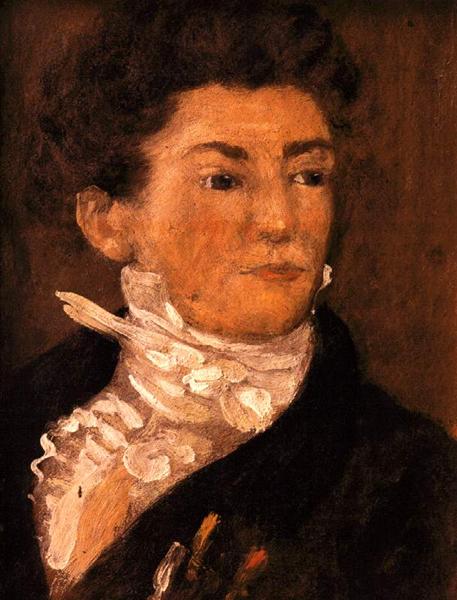Description
The self -portrait of Théodore Géricult, made in 1810, is a work that embodies not only the painter's technical ability, but also its deep connection with romanticism, movement in which its artistic production is located. In this work, Géricault presents an introspective and powerful image of himself, inviting the viewer to a dialogue about identity and emotional expression.
The composition of the painting is remarkable. Géricault is represented by half a body, which allows an intimate approach to its facial expression and in the detail of its clothing. The background is dark, which contrasts with the luminosity of his face and his characteristic dark hair. This use of color not only defines the subject, but also adds a dramatic atmosphere that evokes the sense of introspection and vulnerability. Through the subtle gradation of the tones, a chiaroscuro technique is manifested that emphasizes the three -dimensionality of the face.
In his gaze, melancholy and determination features are hinted, capturing a raw emotional essence that is characteristic of Géricult's work. His expression seems to challenge the viewer to see beyond superficiality, suggesting an internal complexity that can be linked to the artist's personal struggles. A search for authenticity in personal and emotional issues is often associated with romanticism, and this self -portrait is a clear reflection of such ideals.
Géricult is known for its dynamism in the representation of the human body, as observed in subsequent works such as "The Balsa de la Medusa". However, in this self -portrait, its approach is more introspective and reflective, which contrasts with the apotheosis of the action that characterizes much of its work. This stylistic choice can be interpreted as a search for identity through personal representation in a period in which the narrative of the individual was becoming increasingly important in Western art.
On the other hand, this self -portrait constitutes a fascinating visual document of the aesthetics of romanticism in the context of the first half of the nineteenth century. It is representative of the way in which the artists of this current focused on subjectivity and individuality. Géricault, like others of his time, struggled to transcend academic norms and explore the human psyche through artistic expression.
Although many anecdotes are not known about the realization of this specific work, its authenticity and impulse to address the self in its crudest reality make it a favorite within the study of romanticism. This search for personal truth in art, an act of courage in an era of rigid conventions, resonates with the contemporary public, demonstrating that the human connection is timeless. Ultimately, Géricult's self -portrait is not only a mirror of his own existence, but a mirror in which the viewer can project his own reflections.
KUADROS ©, a famous paint on your wall.
Hand-made oil painting reproductions, with the quality of professional artists and the distinctive seal of KUADROS ©.
Reproduction service paintings With a guarantee of satisfaction. If you are not completely satisfied with the replica of your painting, we refund your money 100%.

